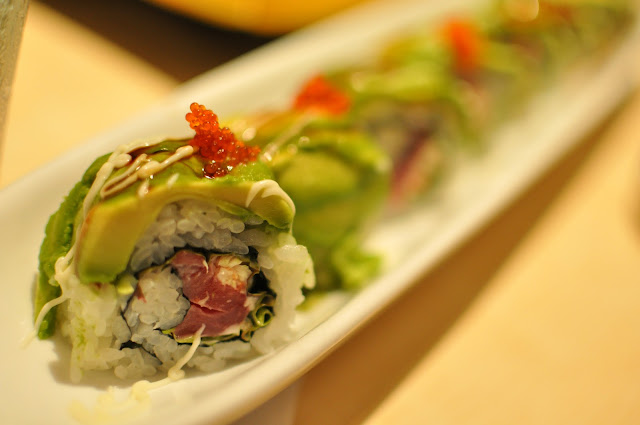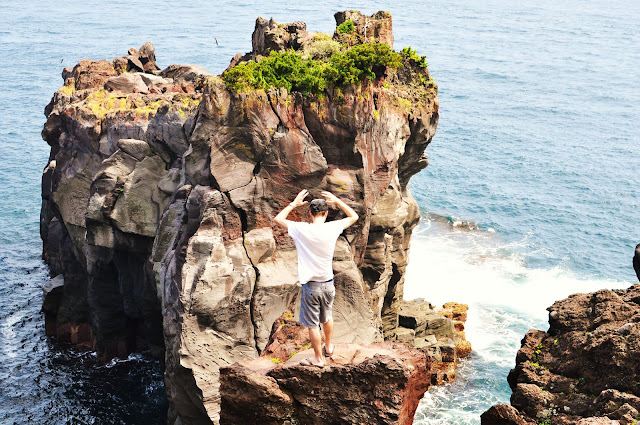
It’s peaceful here, out away from the oppressive heat. It’s almost as though Mother Nature, acting on a compassionate whim, decided to remove the bell jar she’s been keeping over Tokyo these past few weeks. Air as stagnant and stale as a vegan meat locker has begun to circulate, and once more the outside world is youthful and attractive. Lazily, my mind drifts on the wings of the summer breeze finally alighting on the story one of my students imparted a few days ago…
“Cows have been in Japan since sometime in the early 2nd century” he began. “They were originally brought here as work animals to help in the rice fields, but as beef consumption became more popular, numbers multiplied and people started looking for ways to justify investing in such a new venture. It quickly became apparent that fattier cows meant tastier meat, so cattle owners began to hire workers to massage the animals in the hopes that it would improve the meat quality.”
“Wouldn’t that be the life” I interjected.
“Oh, it gets better” he continued. “The overall process hasn’t changed much in recent times. The massage tradition still continues today but now the real focus, just like with people, is on diet and exercise. No exercise, or as little as possible is the best, and a diet high in fiber, makes for the optimum fat to muscle ratio. Furthermore, farmers have discovered that they can feed their cows beer to encourage appetite.”
The Ramen shops I pass at midnight flashed to mind; packed with salary men still smelling of Karaoke parlors as they slurp their noodles more ferociously than a fat kid at the bottom of his milkshake. It makes sense. It seems the drunchies (drunken munchies) are geographically omnipotent regardless of what name you give them and after all, why should they be limited to only the realm of man. If Japanese cattlemen want to treat their cows in the same way as visiting dignitaries, why not, but it also begs the question as to what percentage of Japanese Buddhists are pulling for reincarnation as a Kobe cow? It would be a pretty sweet life. I’m tempted to think of it as a bit like the Asian answer to the Greek Symposium. Drinking and massages on a weekly basis, there are surely many more difficult existences out there. It’s reported that even the venerable Samuel Butler glanced east towards the land of the rising sun when he penned the lines “Man is the only animal that can remain on friendly terms with the victims he intends to eat until he eats them.” (Note-Books, 1912) If nothing else we are compassionate carnivores.
“Do they also feed the horses beer?” I inquired.
“That, I don’t know” he replied.

Now you may be thinking this last question was a clever ploy to simply keep the conversation going, after all it is my job, but it was asked in earnest. The reason was that not too long ago, I’d found myself staring down an immense platter of raw horsemeat. In Japan, because of its pink color the stuff is aptly named sakura (桜 cherry blossom) or sakuraniku (桜肉 literally cherry blossom meat). If it’s made into sashimi, the popular way to serve it at izakayas (Japanese bars) and the manner of cut I was glancing at, it’s called basashi (馬刺し). Delicate slices about 1/8th of an inch thick were layered on top of each other and thin streaks of white marbling accentuated the pinkish flesh. Upon the first bites I was struck with the impression that my mouth, although it was wearing a slightly beery filter, could hardly distinguish between this and the cooked meat we’re so fond of in the west. It was just a touch sweeter than beef and not at all as chewy as I imagined it to be. I suppose I could liken the consistency to the offspring of an older cheese and boiled bacon. Not so terrible and once I was past the psychological aversion it was actually quite pleasant. Those of you who are Japan bound, if only for the experience, should definitely put it on your list.





















































